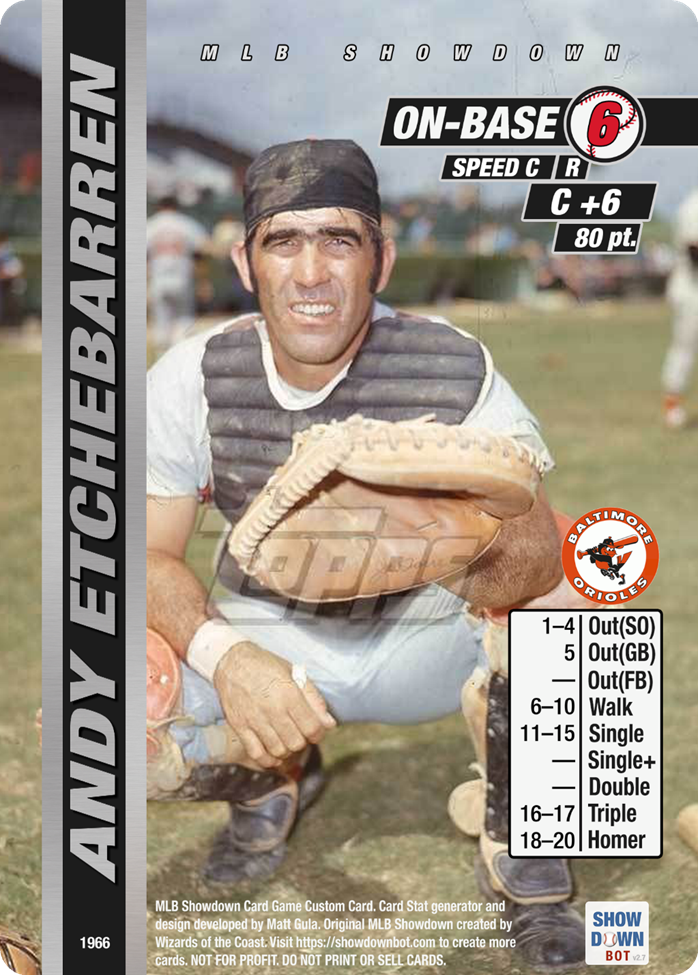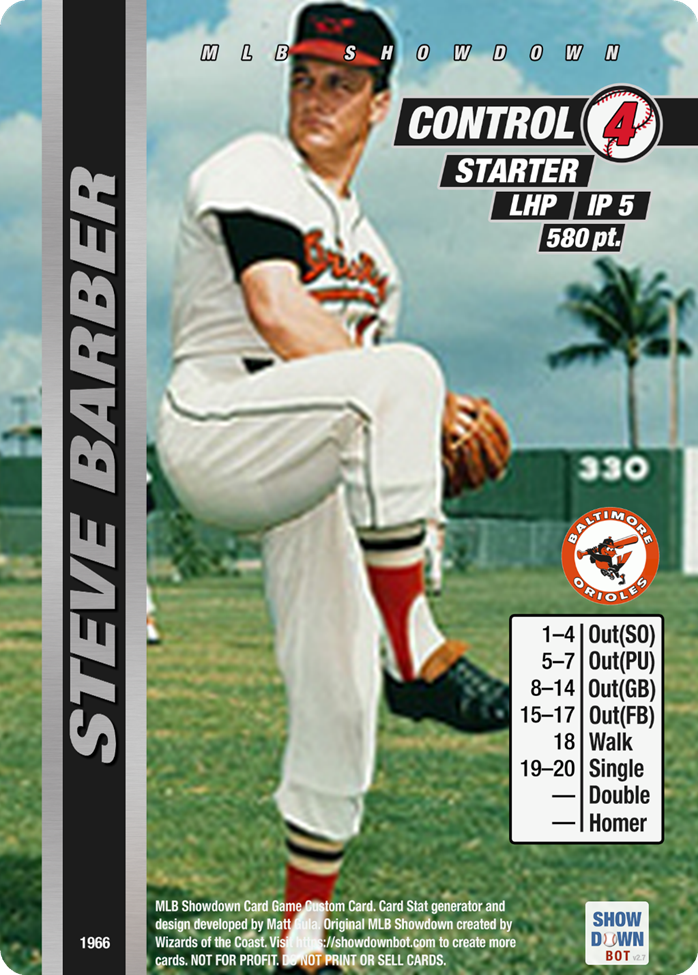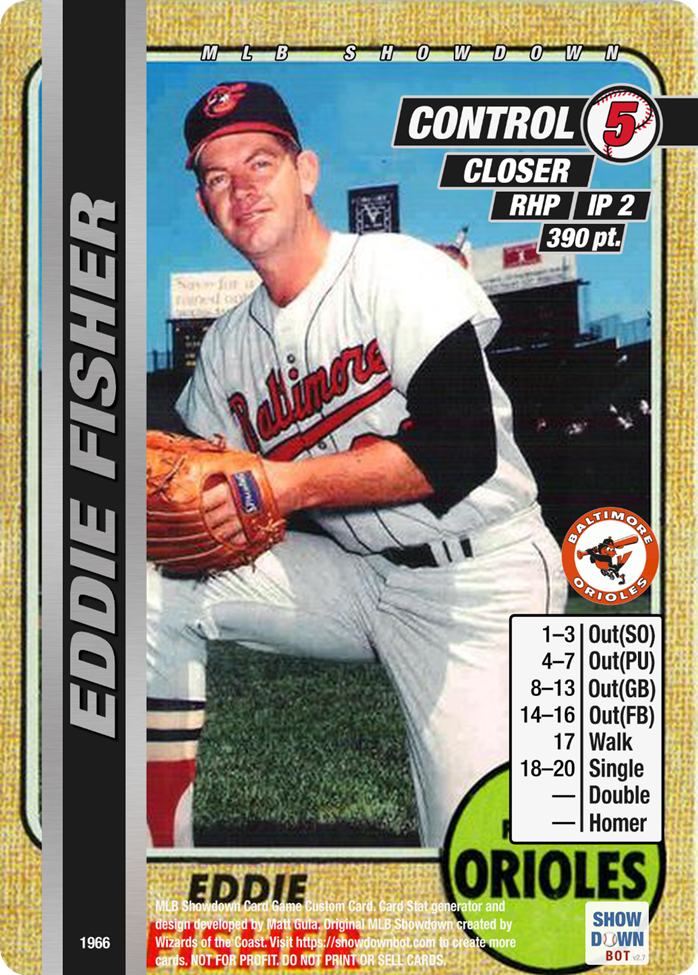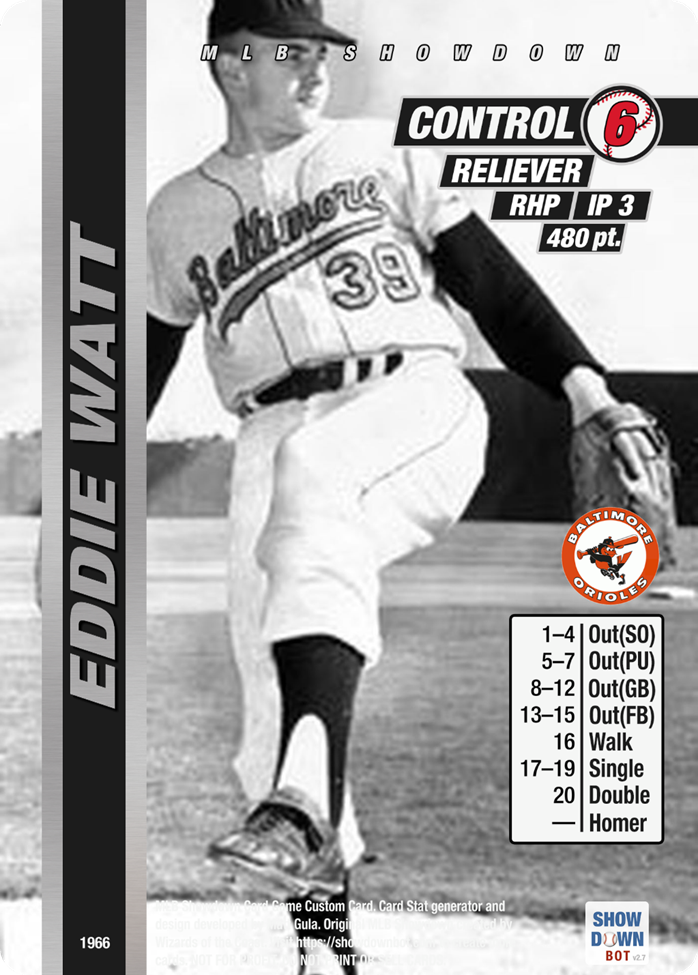So I've started doing teams of yesteryear, and I think they'll offer interesting options for team-building, and show us how teams were built differently at times.
I'm starting with the 1966 Baltimore Orioles, who shocked the major leagues by sweeping the Los Angeles Dodgers out of the World Series.
Lineup: I won't lie, I'm beginning to understand why they lowered the mound in time for the 1969 season. The champs have exactly ONE hitter with an on-base above 8. There is some decent pop, but you're hoping you can scrape a few runs out.
Note: The Brooks Robinson picture was auto-generated in the Showdown bot, and the Frank Robinson card is from the Greatest MLB Showdown Project, here: https://greatestmlbshowdown.blogspot.com/2019/02/in-memory-of-frank-robinson.html
I'll be honest, this Triple Crown from Frank "I am become Death, Destroyer of Baseballs" Robinson is one of the funniest stories in MLB history. The Reds traded Robinson because he was about to turn 30, and they didn't want a player on the wrong side of 30. This angered Frank, who punished baseballs severely the whole season, capping with the WS MVP with 4 hits in the series, including a triple and two of the five homeruns hit between BOTH teams.
And he was a starter-level player through his age-38 season. Oops!
Total Points: 1,910
Bench: ...only Snyder is draftable, in my opinion.
Total Points: 410
Rotation: They are ordered by IP, not by point value. All four are draftable, though it will depend on how you intend to build your bullpen. 3 of the four was under 24 at the time; Barber is the 'old man' of the group and the only one that was an All-Star that year. It was his last good season; tendinitis in his elbow made him miss time, including the WS. He may be best remembered for being in "Ball Four" than being on this team.
Total Points: 1,970
Bullpen: Wow, these are some pricey relievers! All pitch at least two innings, could be VERY valuable depending on how your league handles reliever appearances/innings.
Total Points: 1,620
Total Points Pitching is 3,590!!
Total of 5,910
Thank you for looking!























